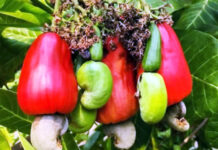The Kintampo Municipal Department of Agriculture has organised a one day workshop to introduce phase two (2) of Planting for Food and Jobs (PFJ), one of the flagship programmes in the agriculture sector introduced by President Nana Addo Dankwa Akufo Addo in 2017.
Speaking at the ceremony, the Kintampo Municipal Director for Agriculture, Mr. Simon Yambor stated that PFJ phase two, also known as 2.0 has been introduced again by the government, to correct the mistakes of phase one (1) and to modify some of the activities of the project.
He urged participants to identify problems from phase one and seek clarification for improvement.
“This flagship programmes being introduced by the government are for the development of our districts and municipalities such as Kintampo, and it is the taxes we pay that are being used to sponsor such programmes for our benefit, lets identify all problems in phase so that phase becomes more successful”, he said.
The Municipal Coordinating Director for Kintampo, Alhaji Inusah Yarifa, threw more light on the planting for food and jobs program and said the part two is coming to correct all the mistakes in the phase, as well as to ensure proper evaluation.
He advised farmers to always buy into government policies and programmes to help them develop themselves, adding that “It is because of you that all programmes and policies are being introduced and following all the rules will give you good yields and products”.
Mr. Kennedy Asirifi, the Municipal Agric Officer in charge of crops, gave a brief presentation on the new introduction of the project PFJ Phase two or PFJ 2.0 with some details, as it consists of it being a five year master plan for the renewal of agriculture in Ghana (2024-2028), a holistic view of the value chain approach, the expected several critical challenges such as, availability and cost of financing, weak linkages, unsustainable subsidy and unstructured markets for agricultural produce among others.
Mr. Asirifi said the objectives of phase two are to ensure food availability, reduce food price inflation, promote import substitution and promote exports among others.
He also indicated that, the PFJ 2.0 programme will cover small, medium and large-scale farmers, input suppliers, agricultural extension agents, master AMSEC, agricultural mechanization services centers, warehouse infrastructure and collateral managers, produce off-takers, financial institutions, ancillary players/actors and MoFA for coordination.
He pointed out the difference between PFJ 2.0 and PFJ 1.0 as “to transform agriculture and stimulate growth through subsidies to food security and job creation”,
He added that the phase 2 aims to transition from a direct input subsidy to direct credit system linked to a strutted market arrangement, no subsidy, and addition of other food crops.
The target crops of PFJ/2.0 are; grains; maize, rice, soya beans and sorghum. Others are vegetables; tomatoes, pepper and onion. The rest are, root and tubers; cassava, yam, plantain and poultry.
He said that every farmer in Ghana is qualified to benefit from the PFJ/2.0 project.
The implementation modalities are; beneficiary farmer registration and GPS farm mapping, farmers linked to accredited aggregators, aggregators then provide timely inputs to beneficiary farmers on credit, while participating banks provide payment guarantees to input suppliers on the program.
Aggregators recover the equivalent cost of inputs with produce, aggregators store the recovered commodities in designated warehouses, majority of the warehoused commodities would be sold to off-takers, and off-taker would pay the banks upon receipt of the warehouse commodities and so on.










